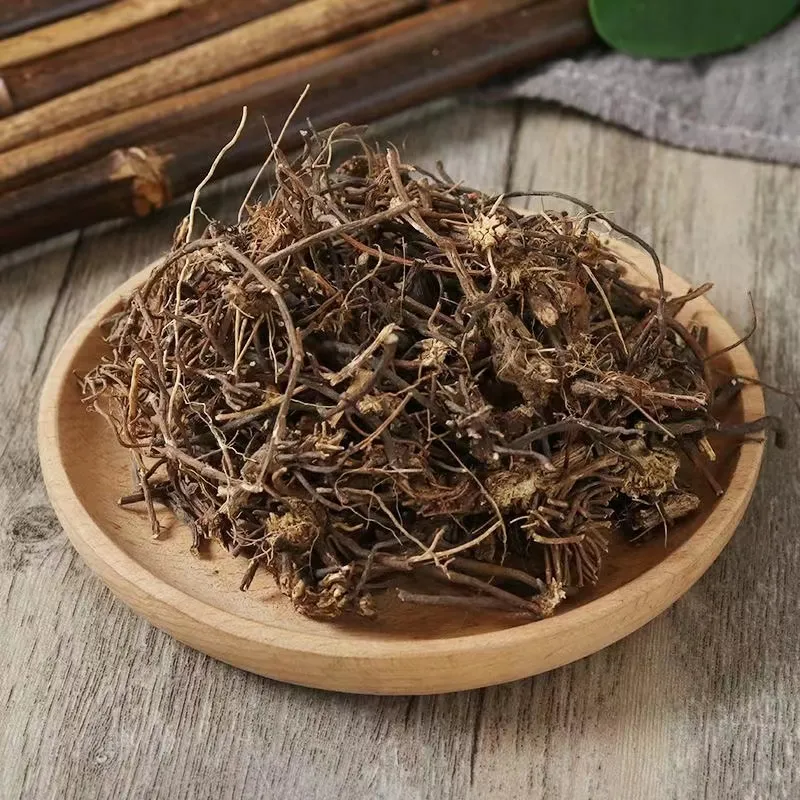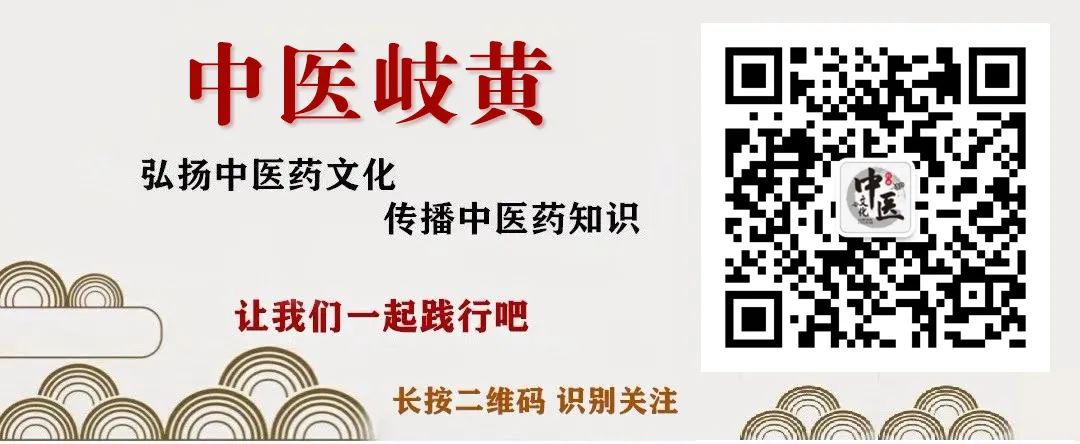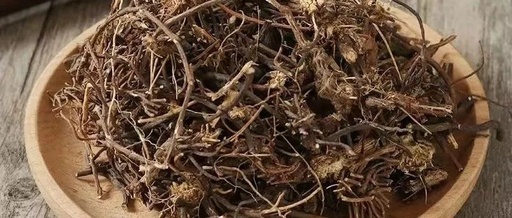Uric acid is a normal product of purine metabolism in the human body. When the metabolism of uric acid is insufficient, leading to excessive accumulation, it can result in serious consequences—hyperuricemic arthritis, commonly known as gout. Today, I will introduce several herbs that can lower uric acid.Herbs for Lowering Uric Acid1. Tu Fu Ling (Smilax glabra)First, it is important to distinguish that we are referring to Tu Fu Ling, not Fu Ling. Although they differ by only one character, they are completely different herbs. Fu Ling is a dried sclerotium of a fungus, while Tu Fu Ling is a dried rhizome of a plant from the lily family (known as Zha Mu).Effects: Tu Fu Ling has the effects of dispelling dampness, promoting urination, relieving joint pain, and detoxifying. Many ancient texts mention that Tu Fu Ling can eliminate dampness and heat, open meridians, and relieve joint pain, which supports its use as a treatment for arthritis. Additionally, Tu Fu Ling enhances the urinary system, promoting the excretion of metabolic waste, thus accelerating purine metabolism and preventing the accumulation of uric acid in the body.Suitable Population: It is suitable for individuals with rheumatic issues and high uric acid levels, as it has the effects of dispelling dampness and lowering uric acid. It can also be used to treat issues such as difficult urination, irregular menstruation in women, and leukorrhea. Due to its detoxifying properties, it is also effective for treating boils, scabies, and syphilis. Generally, for treating blood heat, sore throat, and women’s issues, Tu Fu Ling is often combined with other herbs such as Jin Yin Hua (Honeysuckle), Huang Lian (Coptis), Zhi Zi (Gardenia), and Qu Mai (Dianthus). For treating syphilis, it can be combined with herbs like Qian Cao (Rubia) and Cao Wu (Aconitum).2. Che Qian Cao (Plantago asiatica)Che Qian Cao, also known as Che Qian Zi, is a common plant often found growing in mountainous areas, especially near water, vegetable gardens, and roadsides. The medicinal part is the seeds harvested in spring and autumn, which are cleaned of impurities. Depending on the preparation method, it can be classified into Che Qian Zi, Chao Che Qian Zi (stir-fried), Yan Che Qian Zi (salted), and Jiu Che Qian Zi (wine-prepared).Effects: Che Qian Zi is recorded in herbal texts as belonging to the liver, spleen, kidney, and bladder meridians, thus it has the effects of promoting urination, dispelling dampness, detoxifying, clearing heat, improving vision, and facilitating urination.Suitable Population: Che Qian Zi is particularly effective for damp-heat in the lower jiao, promoting urination and alleviating symptoms such as difficult urination and hematuria. It is also effective for removing dampness and treating conditions like eczema and rheumatic arthritis. Additionally, it accelerates metabolism, thus contributing to lowering uric acid levels. Modern studies have found that Che Qian Zi also has cough-suppressing and phlegm-reducing properties, leading to its use in treating chronic bronchitis.3. Jin Qian Cao (Lysimachia christinae)Jin Qian Cao is a common herbaceous plant, often used as a household green or potted plant. It is also known by various names such as Copper Coin Grass, String of Coins, and Jaundice Grass. Jin Qian Cao prefers shady, moist environments and dislikes high temperatures, so care should be taken regarding room temperature when cultivated at home. In the wild, it thrives near water sources, such as roadside ditches and grassy slopes, and is common in regions south of the Yangtze River.Effects: The whole plant of Jin Qian Cao is used medicinally, with effects including anti-inflammatory, detoxifying, diuretic, clearing heat, dispelling wind, expelling stones, killing parasites, relieving pain, and promoting blood production.Suitable Population: Due to its effectiveness in clearing heat, promoting urination, and relieving inflammation and pain, Jin Qian Cao can be used to treat jaundice, acute and chronic hepatitis, oral inflammation, urinary infections, and even nephritis, as well as insect bites and dysentery. Generally, for treating contact dermatitis or conditions like rheumatic arthritis and periarthritis, Jin Qian Cao can be boiled in water for washing to achieve therapeutic effects. It also facilitates urination and expels stones, thus lowering uric acid levels, making it beneficial for treating and preventing stones, such as urinary and gallbladder stones. It can be brewed as a decoction or tea, often combined with Da Huang (Rhubarb) and Yu Jin (Curcuma) for enhanced effects.4. Bi Xie (Dioscorea hypoglauca)Bi Xie is divided into Mian Bi Xie and Fen Bi Xie, with the medicinal part being the rhizomes of both. It is commonly found in regions like Zhejiang and Fujian. As a medicinal material, Mian Bi Xie is usually processed into irregularly shaped slices, with a yellow-brown or brownish-yellow outer skin, while Fen Bi Xie is typically irregular thin slices with a gray-brown or brown-black outer skin and a yellow-white or light gray-brown cross-section.Effects: Bi Xie belongs to the stomach and kidney meridians, with effects of promoting urination, dispelling dampness, relieving wind, alleviating pain, transforming turbidity, and eliminating obstruction.Suitable Population: Due to its ability to dispel dampness and alleviate obstruction, Bi Xie is often used to treat rheumatic pain, facilitating meridian flow and relieving joint stiffness. It is particularly effective when combined with Niu Xi (Achyranthes) and Fu Zi (Aconitum) for treating cold-dampness in the joints. Its ability to promote urination and transform turbidity makes it a superior herb for treating cloudy urine, often combined with Yi Zhi Ren (Alpinia) and Shi Chang Pu (Acorus) for tea, which can also help with uric acid crystallization.5. Wei Ling Xian (Clematis chinensis)Wei Ling Xian, like most Chinese herbs, is used for its rhizome. It primarily grows in regions such as Yunnan, Guizhou, and Sichuan, as well as Guangxi, Guangdong, and Anhui. Wei Ling Xian is not particularly demanding regarding climate and soil but prefers locations rich in humus, such as thickets and valleys that are moist and shady.Effects: Wei Ling Xian has effects of dispelling dampness, relieving wind and cold, reducing inflammation, promoting meridian flow, alleviating pain, and regulating qi.Suitable Population: Wei Ling Xian has a wide range of applications, not only in Han medicine but also in the medical histories of the Mongolian, Miao, and Tujia ethnic groups. Due to its effects of dispelling dampness, relieving wind, and promoting meridian flow, Wei Ling Xian can treat rheumatic bone pain, toothache, headaches, joint stiffness, and lower back pain. It also has diuretic and anti-inflammatory properties, thus being effective for lowering uric acid, jaundice, and jaundice-type infectious hepatitis. Additionally, Wei Ling Xian has a unique ability to resolve foreign objects in the esophagus, making it useful for treating fishbone obstruction in the throat.6. Fang Feng (Saposhnikovia divaricata)Fang Feng is highly praised in the Compendium of Materia Medica as a miraculous herb for dispelling wind and dampness. It thrives in cool, dry climates, commonly found in regions such as East China, Hebei, Heilongjiang, and Inner Mongolia. The medicinal part is its umbrella-shaped root, harvested in spring and autumn, cleaned, soaked, sliced, and dried for medicinal use.Effects: According to numerous ancient texts, Fang Feng has effects of dispelling wind, promoting urination, relieving exterior symptoms, and alleviating pain.Suitable Population: Fang Feng is effective for dispelling wind and dampness, making it beneficial for individuals with spleen deficiency and heavy dampness, thus promoting urination and enhancing metabolism to lower uric acid levels. It also has exterior-releasing properties, making it effective for treating wind rash and skin itching, as well as joint pain caused by rheumatism. When combined with Huang Lian (Coptis), Gan Cao (Licorice), and Rui Ren (Semen Coicis) to make a decoction, it can be very effective for eye diseases.Conclusion:These are the six most powerful herbs for lowering uric acid. Additionally, individuals with high uric acid levels should pay special attention to their diet. Whether using traditional Chinese medicine or Western medicine, the uric acid levels can only be reduced to a certain extent. If the underlying condition is not controlled, the medication will be ineffective. Therefore, it is advisable to limit the intake of organ meats and seafood, which are high in purines, and to avoid alcohol, especially beer.Warm Reminder:This account aims to promote traditional Chinese medicine culture. The herbal formulas mentioned in the text are for learning and exchange purposes only.
Today, I will introduce several herbs that can lower uric acid.Herbs for Lowering Uric Acid1. Tu Fu Ling (Smilax glabra)First, it is important to distinguish that we are referring to Tu Fu Ling, not Fu Ling. Although they differ by only one character, they are completely different herbs. Fu Ling is a dried sclerotium of a fungus, while Tu Fu Ling is a dried rhizome of a plant from the lily family (known as Zha Mu).Effects: Tu Fu Ling has the effects of dispelling dampness, promoting urination, relieving joint pain, and detoxifying. Many ancient texts mention that Tu Fu Ling can eliminate dampness and heat, open meridians, and relieve joint pain, which supports its use as a treatment for arthritis. Additionally, Tu Fu Ling enhances the urinary system, promoting the excretion of metabolic waste, thus accelerating purine metabolism and preventing the accumulation of uric acid in the body.Suitable Population: It is suitable for individuals with rheumatic issues and high uric acid levels, as it has the effects of dispelling dampness and lowering uric acid. It can also be used to treat issues such as difficult urination, irregular menstruation in women, and leukorrhea. Due to its detoxifying properties, it is also effective for treating boils, scabies, and syphilis. Generally, for treating blood heat, sore throat, and women’s issues, Tu Fu Ling is often combined with other herbs such as Jin Yin Hua (Honeysuckle), Huang Lian (Coptis), Zhi Zi (Gardenia), and Qu Mai (Dianthus). For treating syphilis, it can be combined with herbs like Qian Cao (Rubia) and Cao Wu (Aconitum).2. Che Qian Cao (Plantago asiatica)Che Qian Cao, also known as Che Qian Zi, is a common plant often found growing in mountainous areas, especially near water, vegetable gardens, and roadsides. The medicinal part is the seeds harvested in spring and autumn, which are cleaned of impurities. Depending on the preparation method, it can be classified into Che Qian Zi, Chao Che Qian Zi (stir-fried), Yan Che Qian Zi (salted), and Jiu Che Qian Zi (wine-prepared).Effects: Che Qian Zi is recorded in herbal texts as belonging to the liver, spleen, kidney, and bladder meridians, thus it has the effects of promoting urination, dispelling dampness, detoxifying, clearing heat, improving vision, and facilitating urination.Suitable Population: Che Qian Zi is particularly effective for damp-heat in the lower jiao, promoting urination and alleviating symptoms such as difficult urination and hematuria. It is also effective for removing dampness and treating conditions like eczema and rheumatic arthritis. Additionally, it accelerates metabolism, thus contributing to lowering uric acid levels. Modern studies have found that Che Qian Zi also has cough-suppressing and phlegm-reducing properties, leading to its use in treating chronic bronchitis.3. Jin Qian Cao (Lysimachia christinae)Jin Qian Cao is a common herbaceous plant, often used as a household green or potted plant. It is also known by various names such as Copper Coin Grass, String of Coins, and Jaundice Grass. Jin Qian Cao prefers shady, moist environments and dislikes high temperatures, so care should be taken regarding room temperature when cultivated at home. In the wild, it thrives near water sources, such as roadside ditches and grassy slopes, and is common in regions south of the Yangtze River.Effects: The whole plant of Jin Qian Cao is used medicinally, with effects including anti-inflammatory, detoxifying, diuretic, clearing heat, dispelling wind, expelling stones, killing parasites, relieving pain, and promoting blood production.Suitable Population: Due to its effectiveness in clearing heat, promoting urination, and relieving inflammation and pain, Jin Qian Cao can be used to treat jaundice, acute and chronic hepatitis, oral inflammation, urinary infections, and even nephritis, as well as insect bites and dysentery. Generally, for treating contact dermatitis or conditions like rheumatic arthritis and periarthritis, Jin Qian Cao can be boiled in water for washing to achieve therapeutic effects. It also facilitates urination and expels stones, thus lowering uric acid levels, making it beneficial for treating and preventing stones, such as urinary and gallbladder stones. It can be brewed as a decoction or tea, often combined with Da Huang (Rhubarb) and Yu Jin (Curcuma) for enhanced effects.4. Bi Xie (Dioscorea hypoglauca)Bi Xie is divided into Mian Bi Xie and Fen Bi Xie, with the medicinal part being the rhizomes of both. It is commonly found in regions like Zhejiang and Fujian. As a medicinal material, Mian Bi Xie is usually processed into irregularly shaped slices, with a yellow-brown or brownish-yellow outer skin, while Fen Bi Xie is typically irregular thin slices with a gray-brown or brown-black outer skin and a yellow-white or light gray-brown cross-section.Effects: Bi Xie belongs to the stomach and kidney meridians, with effects of promoting urination, dispelling dampness, relieving wind, alleviating pain, transforming turbidity, and eliminating obstruction.Suitable Population: Due to its ability to dispel dampness and alleviate obstruction, Bi Xie is often used to treat rheumatic pain, facilitating meridian flow and relieving joint stiffness. It is particularly effective when combined with Niu Xi (Achyranthes) and Fu Zi (Aconitum) for treating cold-dampness in the joints. Its ability to promote urination and transform turbidity makes it a superior herb for treating cloudy urine, often combined with Yi Zhi Ren (Alpinia) and Shi Chang Pu (Acorus) for tea, which can also help with uric acid crystallization.5. Wei Ling Xian (Clematis chinensis)Wei Ling Xian, like most Chinese herbs, is used for its rhizome. It primarily grows in regions such as Yunnan, Guizhou, and Sichuan, as well as Guangxi, Guangdong, and Anhui. Wei Ling Xian is not particularly demanding regarding climate and soil but prefers locations rich in humus, such as thickets and valleys that are moist and shady.Effects: Wei Ling Xian has effects of dispelling dampness, relieving wind and cold, reducing inflammation, promoting meridian flow, alleviating pain, and regulating qi.Suitable Population: Wei Ling Xian has a wide range of applications, not only in Han medicine but also in the medical histories of the Mongolian, Miao, and Tujia ethnic groups. Due to its effects of dispelling dampness, relieving wind, and promoting meridian flow, Wei Ling Xian can treat rheumatic bone pain, toothache, headaches, joint stiffness, and lower back pain. It also has diuretic and anti-inflammatory properties, thus being effective for lowering uric acid, jaundice, and jaundice-type infectious hepatitis. Additionally, Wei Ling Xian has a unique ability to resolve foreign objects in the esophagus, making it useful for treating fishbone obstruction in the throat.6. Fang Feng (Saposhnikovia divaricata)Fang Feng is highly praised in the Compendium of Materia Medica as a miraculous herb for dispelling wind and dampness. It thrives in cool, dry climates, commonly found in regions such as East China, Hebei, Heilongjiang, and Inner Mongolia. The medicinal part is its umbrella-shaped root, harvested in spring and autumn, cleaned, soaked, sliced, and dried for medicinal use.Effects: According to numerous ancient texts, Fang Feng has effects of dispelling wind, promoting urination, relieving exterior symptoms, and alleviating pain.Suitable Population: Fang Feng is effective for dispelling wind and dampness, making it beneficial for individuals with spleen deficiency and heavy dampness, thus promoting urination and enhancing metabolism to lower uric acid levels. It also has exterior-releasing properties, making it effective for treating wind rash and skin itching, as well as joint pain caused by rheumatism. When combined with Huang Lian (Coptis), Gan Cao (Licorice), and Rui Ren (Semen Coicis) to make a decoction, it can be very effective for eye diseases.Conclusion:These are the six most powerful herbs for lowering uric acid. Additionally, individuals with high uric acid levels should pay special attention to their diet. Whether using traditional Chinese medicine or Western medicine, the uric acid levels can only be reduced to a certain extent. If the underlying condition is not controlled, the medication will be ineffective. Therefore, it is advisable to limit the intake of organ meats and seafood, which are high in purines, and to avoid alcohol, especially beer.Warm Reminder:This account aims to promote traditional Chinese medicine culture. The herbal formulas mentioned in the text are for learning and exchange purposes only.
Please share this article so more people can see it.
Promote Traditional Chinese Medicine Culture
Spread Knowledge of Traditional Chinese Medicine
Let us practice together!





